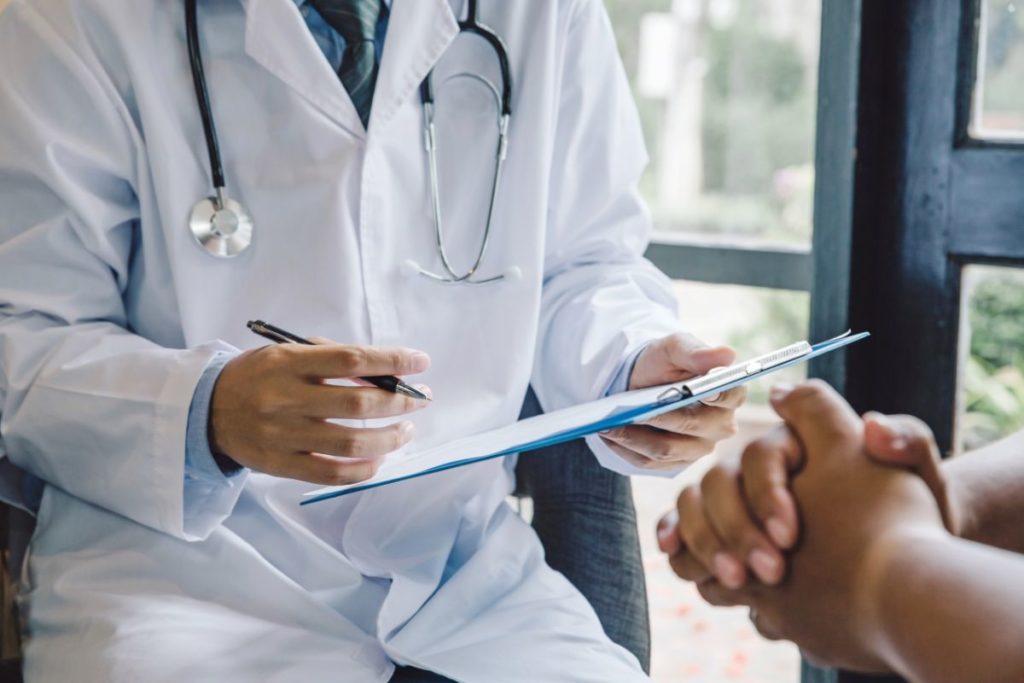Prostate Biopsy
If you have prostate cancer, you are not alone – approximately 220,000 men are diagnosed in the United States each year. Other than skin cancer, prostate cancer is the most commonly diagnosed cancer among men. However, it is also one of the most treatable, especially if detected early.
Your doctor determines via prostate screening if you or a loved one is at risk for prostate cancer. Performing a prostate screening is done in two ways, a prostate-specific antigen (PSA) blood test or a digital rectal exam (DRE). After the prostate screening, a prostate biopsy is the next step in prostate cancer diagnosis.
A prostate biopsy is the most accurate way to diagnose prostate cancer. A prostate biopsy is a procedure that removes a small pieces of prostate gland tissue. The prostate gland tissue is examined microscopically for cancer or other irregular cells.


Preparing for Prostate Biopsy
Communicating with your healthcare provider is the best course of action in preparing for a prostate biopsy. Your healthcare provider will be able to review the details of the procedure with you and answer any questions you may have. Be ready to discuss medical history, any medications you are currently taking, and any medication allergies. A prostate biopsy may require fasting, an enema, and sedatives if prostate biopsy anesthesia is necessary. Driving preparations may be appropriate for a transrectal procedure. In preventing infection, you will most likely take antibiotics before and after the prostate biopsy.
Prostate Biopsy Procedure
A prostate biopsy is quick. The simple procedure takes twenty minutes or less and commonly causes mild discomfort for the patient.
Your healthcare provider will use an ultrasound to guide a special prostate biopsy needle inserted through the wall of the rectum into the prostate gland for several small tissue extractions, commonly known as a transrectal biopsy. Alternatively, your healthcare provider will insert the biopsy needle into the skin between the rectum and anus for a transperineal biopsy.


Process of Diagnosis
The most accurate way to diagnose prostate cancer is by a prostate biopsy.
After the prostate biopsy procedure is complete, the sample (or specimen) is sent to the lab for testing. Results are sent to your healthcare provider within a few business days. The Gleason Score is the grading system used to gauge the aggressiveness of prostate cancer. Scores typically range from 6 to 10.
After reviewing the lab results, a follow up appointment will be scheduled if any irregularities are detected.
What to Expect After Prostate Biopsy
After your Prostate Biopsy, your healthcare provider will likely recommend you only do light activities for one to two days. The patient may feel slight soreness, and in some cases, experience light bleeding in the rectum, blood in their urine and stool, and notice slightly bloody semen. These symptoms can last anywhere from a few days to several weeks and are not uncommon.

Prostate Biopsy FAQs
-
How soon can I exercise after a prostate biopsy?
Withhold any strenuous physical activity for at least seven days.
-
Is alcohol after prostate biopsy permitted?
Not until the full treatment of antibiotics has been completed.
-
Sex after prostate biopsy, how soon?
It is advised to avoid sexual activity for at least seven days.
